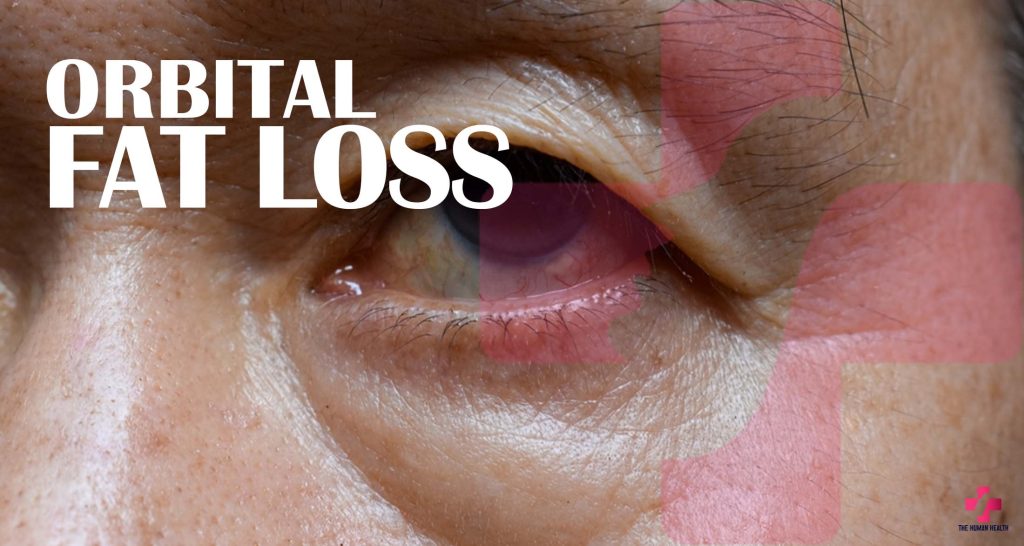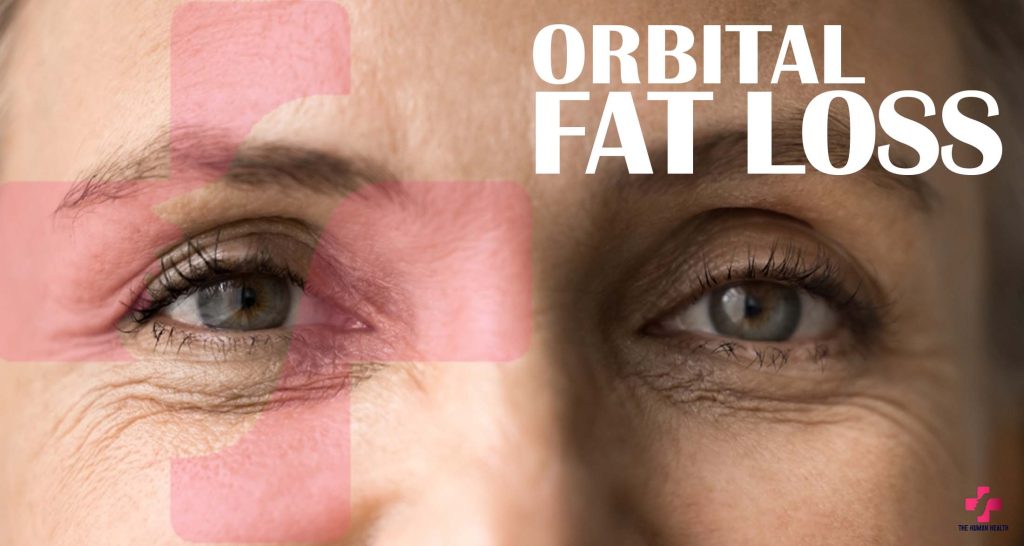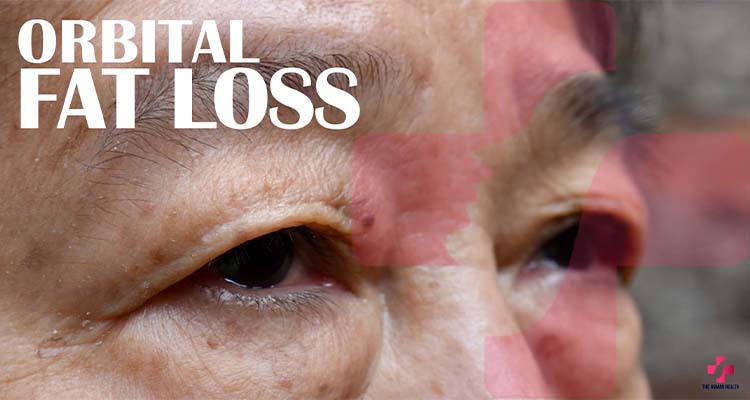Introduction to Orbital Fat Loss
Orbital fat loss is when the fat around your eyes decreases. This area is important for both how you look and how you feel. Losing fat here can make you look younger and healthier. Understanding orbital fat loss helps us see how it affects our face and overall health
The orbit is the part of your face around your eyes. It includes the eyeball, muscles, nerves, and fat. The fat, called periorbital fat, cushions and protects your eyes. As you age, or due to things like genetics, hormones, and lifestyle, fat in this area can change. This can cause puffiness, dark circles, and an older look.
Aging is a big reason for orbital fat buildup. As you get older, your skin loses collagen and elastin, which makes it thinner. This means the skin can’t support the fat as well. The fat can then shift or build up. Poor diet, lack of sleep, dehydration, and too much alcohol can make this worse.
Orbital fat loss is important in beauty and health. Many people want to get rid of puffiness and bags under their eyes. There are many ways to reduce orbital fat, from treatments like laser therapy to surgery. These treatments can remove some fat or tighten the skin, or both.
Non-invasive treatments are popular because they don’t need surgery. For example, laser therapy and ultrasound treatments can help by improving blood flow and making the skin tighter. These treatments are cheaper and don’t require recovery time, so they’re a good option for people who want fast results.
Surgery, like blepharoplasty, is another way to remove or move the fat around the eyes. Surgery gives long-lasting results but carries risks like scarring and infection. People who choose surgery do so for more permanent results. It’s important to talk to a professional to choose the best method.
Orbital fat loss can also be a sign of health problems. Extra fat around the eyes can show issues like fluid buildup, poor circulation, or thyroid problems. By addressing orbital fat, people may find and treat these health concerns.
In conclusion, orbital fat loss is about reducing fat around the eyes. Whether for looks or health, reducing orbital fat can make you look younger, slow aging, and help with health issues. Understanding the causes, treatments, and results of orbital fat loss is important for getting the best results safely.
What is Orbital Fat Loss?
Orbital fat loss happens when the fat around your eyes reduces. The area around your eyes, called the orbital region, helps protect your eyeballs. As we get older or lose a lot of weight, this fat can shrink. This change can make your eyes look more sunken or hollow.
This kind of fat loss is most common as we age. But it can also happen because of health problems, lifestyle habits, or even family history. When you lose fat here, the skin around your eyes might look thinner. This can make dark circles or lines more visible.
What Causes Orbital Fat Loss?
As we age, our skin loses some of its strength and support. This is because our bodies produce less collagen and elastin, which help keep skin firm. The fat around our eyes also decreases, causing the eyes to look sunken.
Extreme weight loss can also cause orbital fat loss. When the body burns fat, it doesn’t always know where to take it from. The orbital area can lose fat, leading to a tired, hollow look.
Some medical conditions can lead to orbital fat loss. For example, thyroid problems or diseases like Graves’ disease can affect fat around the eyes. If the thyroid is out of balance, fat distribution may change, causing the orbital area to lose volume.
How Orbital Fat Loss Changes Your Appearance
When orbital fat decreases, the area around your eyes can look hollow. The skin can appear thinner, which may cause dark circles or lines. If you’re fair-skinned, the bones around your eyes may become more noticeable. You might also notice under-eye bags or a tired look. These changes are common as we age or after significant weight loss.
How to Treat Orbital Fat Loss
There are treatments to restore volume in the orbital area. Some people choose dermal fillers, which are injections that add volume to the skin. These can give a fuller, more youthful appearance.
In more serious cases, surgery might be needed. Fat grafting or eyelid surgery can add volume back to the area around the eyes, either by using fat from other parts of the body or repositioning the remaining fat.
Conclusion
Orbital fat loss is a common concern as we age or lose weight. It can change how our face looks, especially around the eyes. Luckily, there are treatments available to restore volume and reduce the hollowed appearance. If you’re considering treatment, it’s best to talk to a professional to find the best option for you.

Why Does Orbital Fat Loss Happen?
Orbital fat loss is when the fat around your eyes decreases. This makes the area look sunken and hollow. Several things can cause this, like getting older, weight loss, health problems, and lifestyle habits.
Aging
As we get older, the fat around our eyes starts to shrink. This fat cushions the eye and keeps it in place. Over time, the skin around the eyes loses its strength, and the fat thins. This causes the skin to sag and the eyes to look tired. Everyone ages differently, so the amount of fat loss can vary.
Weight Loss
If you lose a lot of weight fast, it can affect the fat around your eyes. When your body burns fat, it can burn fat from your face, too. This makes the eyes look hollow. Fast weight loss from dieting, illness, or surgery can make this happen quicker. Not drinking enough water or poor nutrition can also cause the eyes to look sunken.
Genetics
Your genes affect how your body stores and loses fat. Some people naturally lose fat faster in certain areas of their face, including around the eyes. If family members have experienced orbital fat loss, you might be more likely to have it as well.
Health Problems
Certain health problems can make orbital fat loss happen faster. For example, thyroid problems can affect how your body stores fat. Other conditions, like autoimmune disorders or using steroids, can also cause fat loss around the eyes.
Lifestyle Habits
How you live can affect the skin around your eyes. Poor diet, not enough sleep, too much sun, and smoking can all make the skin weaker. The skin around the eyes is thin, so damage from the sun can break down important proteins, making the area look more hollow.
In conclusion, orbital fat loss happens for many reasons. Aging, weight loss, genetics, health problems, and lifestyle habits all play a part. Knowing what causes orbital fat loss can help you prevent or treat it and improve how your eyes look.
What Can Be This Harm? Orbital Fat Loss
Orbital fat loss happens when the fat around the eyes decreases. This fat cushions the eyes and gives the face its shape. When it goes away, the eyes can look sunken and tired. It can make a person look older or less healthy. Many people feel sad or less confident because of this.
As people get older, the body changes. Fat is lost in different places. Orbital fat loss is easy to notice because it’s in a visible area. Without this fat, eyes may dry out and get hurt more easily. If left untreated, it can make the eyes uncomfortable.
Orbital fat loss can happen for many reasons. Age is the main reason, but other things can cause it too. For example, thyroid problems or some medicines can cause it. Rapid weight loss may also cause orbital fat loss. Stress and sickness can make it worse. Sometimes, infections around the eyes can cause orbital fat loss.
Treating orbital fat loss depends on how bad it is. Some people may choose cosmetic treatments like fillers to add volume to the area. But these treatments won’t fix the cause of the problem.
If the problem is due to a thyroid issue or medication, it may need medical treatment. Regular doctor visits are important to make sure there isn’t a serious problem.
Orbital fat loss is more than a cosmetic issue. It can affect how someone feels and their eye health. It’s important to figure out why it’s happening and treat it.
Is There an Age Limit for Orbital Fat Loss?
Orbital fat loss is when the fat around your eyes decreases. This happens as we age and can cause your eyes to look hollow. So, is there an age limit for orbital fat loss?
As we get older, our skin loses tightness, and fat moves around. This can lead to bags or dark circles under your eyes. Many people worry about this change, especially if they want to look younger.
There’s no set age for orbital fat loss treatment. Fat loss around the eyes happens slowly as we age. Treatments like dermal fillers, fat grafting, and surgery can help fill in the area. These treatments work for people in their 30s, 40s, and older. It’s best to talk to a doctor to find the right treatment for you.
Age can affect how well treatments work. Older people may have less elastic skin, so recovery can take longer. Younger people may need treatments for other reasons, like family history or lifestyle.
In conclusion, there is no strict age limit for orbital fat loss treatments. It’s important to think about your needs and talk to a professional. Understanding how age, genetics, and health affect your options will help you make the best choice.

What Are The Signs of This Happening?
Orbital fat loss happens when the fat around your eyes decreases. This can change how your eyes look. Here are some signs of orbital fat loss to watch for:
Sunken Eyes: Your eyes may look sunken or hollow. This happens when the fat that cushions your eyes disappears. The skin under your eyes may look deeper and tired.
Dark Circles: The skin under your eyes may become thinner, making dark circles more noticeable. Without the fat, the blood vessels show more, making the dark circles darker.
Wrinkles: The skin around your eyes may form more wrinkles. This happens because the skin becomes thinner and less stretchy without fat. Wrinkles may appear, especially under the eyes.
Less Fullness Around the Eyes: Your eyes may look less full and youthful. The skin under your eyes may sag a little, making you look older or tired.
Visible Eyebones: As the fat disappears, your eyebones may become more noticeable. This can make your face look more angular.
Tired or Older Look: Sunken eyes, dark circles, and wrinkles can make you look tired or older than you are.
Uneven Eyes: Sometimes, one eye may lose more fat than the other. This can cause one eye to look more hollow than the other.
Orbital fat loss can happen naturally as you age. It can also happen faster because of things like genes, poor diet, smoking, or not getting enough sleep. If you notice these changes and worry, see a doctor or dermatologist for help.
What Are The Ways To Avoid This?
Orbital fat loss happens when the fat around your eyes goes away. This can make your eyes look sunken or hollow. It can happen because of aging, losing a lot of weight, or genetics. It can make you look tired or older. You can’t control everything, but there are ways to reduce orbital fat loss.
- Keep a Healthy Weight
Losing weight too fast can cause fat loss in the eyes. Keeping a healthy weight by eating well and exercising regularly can help. Eat healthy foods like fruits, vegetables, lean meats, and whole grains. This keeps your body healthy and helps prevent fat loss around the eyes. - Drink Water
Drink enough water to keep your skin healthy. When you’re dehydrated, your skin may sag, which can make orbital fat loss worse. Drinking water keeps your skin plump and smooth. Use eye creams that keep the skin around your eyes hydrated. - Use the Right Skin Care
Use skin care products to protect the skin around your eyes. Choose products with things like retinol, peptides, and hyaluronic acid. These ingredients help keep your skin strong and hydrated. Moisturize your skin to help it stay firm and healthy. - Protect Your Skin from the Sun
Sun damage can make the skin around your eyes thinner. Wear sunscreen every day, especially around your eyes. Choose a sunscreen made for the eye area or use a broad-spectrum SPF of 30 or more. Sunglasses with UV protection help keep your skin safe too. - Do Facial Exercises
Facial exercises may help improve muscle tone and skin around your eyes. This can help the area look fuller and firmer. Try simple exercises to tighten the skin and muscles around your eyes. - Consider Medical Treatments
If orbital fat loss is severe, medical treatments can help. Dermal fillers, like hyaluronic acid injections, add volume and reduce the hollow look. Sometimes, fat from another part of your body can be injected into the orbital area to restore volume.
In conclusion, orbital fat loss happens naturally with age or significant weight loss. But you can prevent or manage it. Stay at a healthy weight, drink enough water, use the right skin care, protect your skin from the sun, do facial exercises, and consider medical treatments. These steps will help you look younger and refreshed.
Conclusion: Orbital Fat Loss
Orbital fat loss happens when the fat around your eyes decreases. This fat helps protect the eyes, but too much can cause puffiness or bags. It’s important to understand why fat builds up and how to reduce it.
Several things can cause fat around the eyes. Your genes, aging, lifestyle choices, and environment all play a part. As you age, the skin around your eyes loses strength and starts to sag. Poor diet, not enough sleep, dehydration, and stress also make puffiness worse. To fix this, a balanced approach works best.
You can reduce orbital fat in different ways. Start by drinking more water, sleeping better, and cutting back on salt. Using eye creams with caffeine or retinoids can help tighten the skin and reduce swelling.
Non-surgical options like laser treatments, chemical peels, or ultrasound can help tighten the skin and reduce fat. These are popular because they are easy to recover from and have less risk.
If you want quicker results, surgery like eyelid surgery or fat transfer may work. These methods remove extra fat and skin to help you look younger. However, they are more risky and take longer to recover from.
It’s important to talk to a doctor before trying orbital fat loss treatments. What works for one person may not work for another. In the end, orbital fat loss is a process that needs a careful approach. By combining lifestyle changes, non-invasive treatments, and surgery when needed, you can look younger and feel better.




